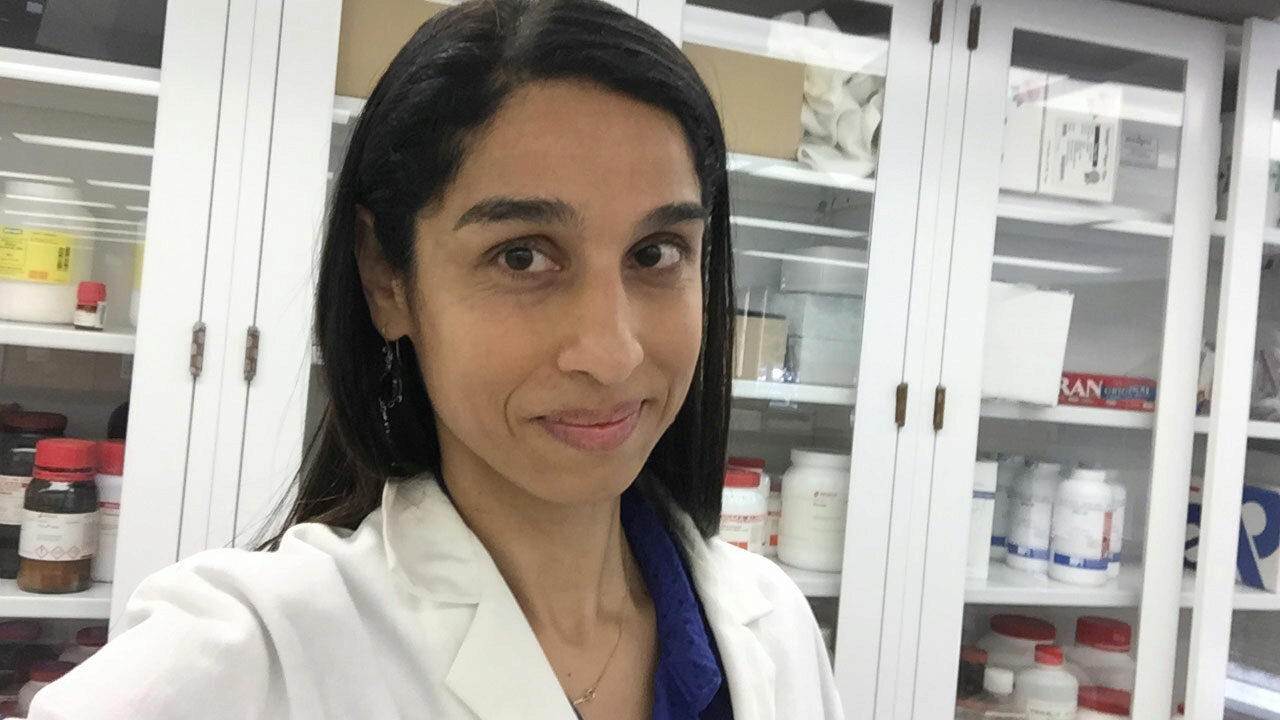U.S. News and World Report recently published its second-annual STEM index, which provides a national snapshot of jobs and education in science, technology, engineering and math. The 2015 STEM Index shows that while employment and degrees granted in STEM fields have improved since 2000, gaps remain between men and women and between whites and minorities in the STEM sector.
On the heels of this recent news, Knowledge@Wharton High School checked in with Bristol-Myers Squibb, a global biopharmaceutical company with a mission to discover, develop and deliver innovative medicines, to talk with a successful scientist – who also happens to be a woman. What is it like to work each day in the science field?
‘Prepared to Constantly Learn New Things’
When a major biopharmaceutical company like Bristol-Myers Squibb (BMS) is trying to figure out new ways to develop drugs to help with different cancers and diseases like fibromyalgia and arthritis, they come to scientists like Charu Chaudhry.
Chaudhry is a senior research investigator in the lead discovery and optimization group (LDO) at BMS’s research campus in Lawrenceville, N.J. There, she works with a team to develop experiments that assess different targets for the development of future drugs and therapies. A typical day for Chaudhry includes meetings with her team to plan new experiments, prepare presentations and write papers, review current scientific journals and spend time in the lab doing experiments.
Chaudhry says that until she started working at BMS, she did not fully appreciate how long it takes to discover and develop a new drug that goes to market – typically a 12-year process. “It is extremely challenging work with high risk that is pursued in a collaborative environment,” she says. “It is critical that every team stays focused on [what they are supposed to deliver], but also understands the big picture and is able to work together, effectively problem-solve and present and share ideas.”
Chaudhry says she often works on multiple projects at once, and that effective time-management and the ability to prioritize her work are critical skills. “Given the rapid pace of new discoveries and methodologies, scientists have to be prepared to constantly learn new things, which is something I love about my work,” she adds.
A curious person by nature, Chaudhry says she always enjoyed science and math, but it wasn’t until she attended Massachusetts Institute of Technology (MIT) as an undergraduate that she became hooked on problem solving while working late at night on solutions for a physics and math brainteasers course.
She also got a taste for research, working in labs throughout her four undergraduate years and summers, and especially in the lab of Peter Kim (currently a professor of biochemistry at Standford University), learning about experimental biochemistry and the physics of proteins. She focused her research and studies in the areas of biophysics, molecular biology and biotechnology. She says the key role of mentors in her education, in particular her PhD work with Art Horwich at the Yale School of Medicine, was invaluable and taught her to be “truly question-driven and not method-focused.”
“One of the most important traits of a good scientist is to be able to ask the right questions, and to have the training and conviction to get the answers in very rigorous ways,” says Chaudhry. “I would also recommend being as broad and multi-disciplinary as possible in training and thinking about problems.”
She says taking advantage of hands-on research opportunities as early as possible is “invaluable” for budding scientists, and she recommends looking at colleges and universities with ample opportunities for undergraduate research opportunities.
Harnessing the Immune System to Fight Cancer
“These are exciting times to live through for science with the remarkable pace of new revolutionary scientific and technological discoveries,” Chaudhry says, pointing to how scientists are learning to use the body’s own immune system to fight cancer, finding new frontiers in genome editing, and making technological advances in 3-D bio-printing of the body’s organs.
“The current challenge is to translate these discoveries into novel medicines and public health impact, and to bridge that gap,” she says. “It will require new models of how to work across academia and industry to marry [different types of research] to increase the efficiency of drug development.”
Related Links
Conversation Starters
The image of a scientist hunched over her telescope suggests that this type of work requires independence and hours alone in the lab. Do Charu Chaudhry’s career insights support this notion? Why or why not?
Chaudhry says, “One of the most important traits of a good scientist is to be able to ask the right questions.” Why is a curious nature so valuable to strengthening skills in innovation and problem solving? Need more guidance? Check out this KWHS article on Developing a Questioning Mind and Spirit.
Using some of the links below, research genome editing, 3-D bio-printing of the body’s organs and other recent scientific discoveries. Why are these discoveries important? How do they relate to developing new medicines? Share what you’ve learned in a group or with your class.



